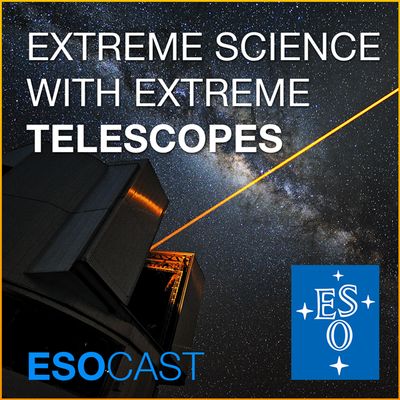ESOcast is a video podcast series dedicated to bringing you the latest news and research from ESO, the European Southern Observatory. Here we explore the Universe's ultimate frontier.
https://www.eso.org/public/esocast.html
Gesamtlänge aller Episoden: 15 hours 50 minutes
Metal scar found on cannibal star | ESOcast Light
Using ESO’s Very Large Telescope, astronomers have found a metal ‘scar’ imprinted on the surface of a dead star. This video summarises the discovery.
Astronomers identify record-breaking quasar | ESOcast Light
Astronomers have characterised the most luminous quasar observed to date, which is powered by the fastest-growing black hole. This black hole is growing in mass by the equivalent of one Sun per day. The matter being pulled in toward this black hole f
Supernovae give rise to black holes or neutron stars (ESOcast 269 Light)
Astronomers have found a direct link between the explosive deaths of massive stars and the formation of the most compact and enigmatic objects in the Universe — black holes and neutron stars. This video summarises the discovery.
The furthest ever galactic magnetic field (ESOcast 267 Light)
Using ALMA, astronomers have detected the magnetic field of a galaxy so far away that its light has taken more than 11 billion years to reach us. Never before had we detected a galaxy’s magnetic field this far away. This video summarises the discover
